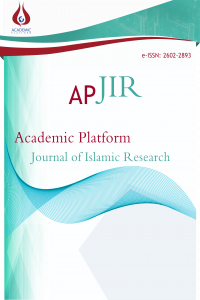Great Game in Central Asia: Causes and Consequences
Great Game, Influence of Great powers
___
- G. J. Alder (1879), British India’s Northern Frontier (1963), pp. xi–xii; David Gillard, The Struggle for Asia 1828–1914 (1977), pp. 1–5 Demetrius C. Boulger, England and Russia in Central Asia, vol. 2, i, ii, 172,185, 229. J. W. Kaye (1857), History of the War in Afghanistan, rev. ed., vols. 3 77 Amin Saikal (2004), Modern Afghanistan: A History of Struggle and Survival, I.B.Tauris & Co Ltd, New York, 127, 165 Ahmad Rashid (1998), Taliban, Islam oil and New Great Game in Central Asia, I.B. Tauris, Publishers, London, pp.11-13 H. W. C. Davis (1920), History of the Blockade: Emergency Departments,55-76; Karl E. Meyer and Shareen Blair Bryssac (1999), Tournament of Shadows: the Great Game and the Race for Empire in Central Asia (Washington, DC, 20-40 Amin Saikal, Op.Cit. 176 Peter L. Roudik (2007), The History of Central Asian Republics, Greenwood Press, London, 59 Fatima, Q. (2012). The United States Approach Towards South Asia in Changing Geopolitical Environment (1990-2000). Islamabad: Higher Education Commission; Fatima and Sumera (July - December 2014), New Great Game: Players, Interests, Strategies and Central Asia. South Asian Studies, A Research Journal of South Asian Studies Vol. 29, No.2, 623-652 Fromkin D (1980), Great Game in Asia. Foreign Affairs 58(4): 936-951. Peter Hopkrik (1990), The Great Game, on Secret Service in High Asia, John Murray (Publishers) London, p.75 Ibid, 73-74 Ibid, 79-80 Lansford T (2002), The Great Game renewed? US – Russian rivalry in the arms trade of South Asia. Security Dialogue 33(2): 127-140. Kelly D (2000), End of the Great Game: British intervention in Russia’s Southern Borderlands and the Soviet response. The Journal of Slavic Military Studies 13(4): 84-100. Fromkin (1980), Op.cite, 941. Hopkirk P (2002), The Great Game revisited? Asian Affairs 33(1): Part I. 61 Heartland Geopolitics and the Case of Uzbekistan, E-note, Foreign Policy Research Institute,http://www.fpri.org/enotes/20040125.seiple.mackinderuzbekistan.html Mackinder, H. J. (1962), The Geographical Pivot of History in Democratic Ideals and Reality. New York: Norton and Company, 261 Scott, M. Alcenat W. (2008), Revisiting the Pivot: The influence of Heartland Theory in Great Power Politics, Macalster College. Retrieved from:https://www.creighton.edu/ fileadmin/user/CCAS/departments/PoliticalScience/MVJ/docs/The-Pivot-AlcenatandScottpdf Hopkrik, (1990),Op.Cite, 258-260 Ibid, 267-269 Ibid, 201, 261 Kleveman, L. (2004), The New Great Game: Blood and Oil in Central Asia, London. p. 76 Isaacs R. (2016), Geopolitics in Central Asia, Presentation delivered on January 22 at CERIS Brussels. Verrier, Anthony, Francis (1991), Young Husband and the Great Game, Jonathan Cape, London……………… Petar Kurecic (2010), The New Great Game: Rivalry of Geostrategies and Geoeconomies in Central Asia, Hrvatski Geografski Glasnik, 72/1, 21 – 48 Mackinder, H. J. (1904), The Geographical Pivot of History, The Geographical Journal, 24/4, 435. Craig D. Wills (2006), US Air Power, Afghanistan and the Future of warfare: An Alternative View, Air University press, Alabama, 35 Jim Nicole (2003), Central Asia’s New States and Political Developments and implication for US Interests, Congress Research Services and The Library services, 6 Ibid, 15 Nassim Javid (1992), Afghanistan: A Nation of Minorities, The Minority Rights Group, 5 Ibid, 38 Shamkhal Abilov, The “New Great Game” Over the Caspian Region: Russia, the USA, and China in the Same Melting Pot, Khazar Journal of Humanities and Social Sciences, 1 Kleveman, Lutz (2004), The New Great Game: Blood and Oil in Central Asia (New York, Grove, Press, 4. Kumar, Pankaj (2009), “The Unrealized Dream of Caspian Oil”, International Politics, Vol.2, No. 4, Summer& Autumn, 9. Zeinolabedin, Y., et al. (2009), “Geopolitics and Environmental Issues in the Caspian Sea”, Caspian Journal of Environmental Sciences, Vol. 7, No. 2, 116. Zeinolabedin, Y., et al. (Spring 2011), “The Geopolitics of Energy in the Caspian Basin”, International Journal of Environmental Research, Vol. 5, No. 2, 504. Sasley, Brent (2004), “The Intersection of Geography and Resources: Geopolitics in the Caspian Sea Basin”, in Tchantouridze, Lasha, ed., Geopolitics: Global Problems and Regional Concerns (Winnipeg: Centre for Defence and Security Studies, University of Manitoba, 194. Fouskas, & Bulent (October 2005), The New American Imperialism: Bush’s War on Terror and Blood for Oil, USA, Praeger, 29. Graham E. Fuller (1992), Central Asia: The New Geopolitics, Santa Monica, CA.: RAND, v-vii. Kevin Smith, (2006)"Defuse Russia's Energy Weapon," International Herald Tribune, (16 January) (New York, http://www.iht.com/articles/2006/01/16/opinion/edsmith.php (accessed on 6/10/2015) Kaczmarski, Marcin (2006), “Russia Creates a New Security System to Replace the CIS”, EURASIA.org,10January;(http://www.eurasianet.org/departments/insight/articles/pp011106.shtml). Accessed on15 August 2017. Labben, Mazen (2009), “The Struggle for the Heartland: Hybrid Geopolitics in the Transcaspian”, Geopolitics, Vol. 14, No. 1, 13. Smith, Jeff M. (2009), “The Great Game, Round Three”, The Journal of International Security Affairs, No, 17, Fall; (http://www.securityaffairs.org/issues/2009/17/smith.php). Accessed on 1 August 2018. (Strachota, Krzysztof (2002), “Russian Policy in the Caucasus and Central Asia”, in Bugajski, Janusz ed., Toward an Understanding of Russia; New European Perspectives (New York, the Council on Foreign Relations, 119 Martha Olcott (Spring 1992), "Central Asides Post-Empire Politics," Orbis, 253-268. Rust,'un Achmedow mid Jttri Sljussarew (1989), Energiewirtschaft, Moscow: APN Verlag, 43-44 Ibid, 40-43 Ann Scott Tyson (2005), “Russia and China Bullying Central Asia, U.S. Says,” Washington Post, July 15, 19 Adam Wolfe (2005), “The ‘Great Game’ Heats Up in Central Asia,” August 3, http://www. pinr. Com /report. Retrieved on 1/7/2018 M.E. Ahrari (Summer 1994), "Moscow mad the Middle East: The Future of Strategic Relationships," Journal of South Asian and Middle Eastern Studies XVII, 11o. 4 1-19.
- Yayın Aralığı: Yılda 3 Sayı
- Başlangıç: 2017
- Yayıncı: Akademik Perspektif Derneği
Ravzatu's-Safa -Gazneliler Bahsi-
Great Game in Central Asia: Causes and Consequences
Thomas Reid’in Algı Teorisinde Görme
BABÜRLÜLER DÖNEMİNDE KURBAN BAYRAMI KUTLAMALARI (1526-1707)
Gurlu Sultanı Muizzeddin Muhammed b. Bahâeddin Sâm’ın Hindistan Seferleri
HEYÂTILA HÜKÜMDARI TARHAN NİZEK
TANRI HAKKINDA KONUŞMANIN FELSEFÎ İMKÂNI: ‘NEGATİF DİN DİLİ’
Babur-Nâme’deki Mesafe ve Uzunluk Birimleri
Zühd Döneminde Basra ve Horasanlı Zahid/Sufilerin Kesb ve Tevekkül Anlayışı
